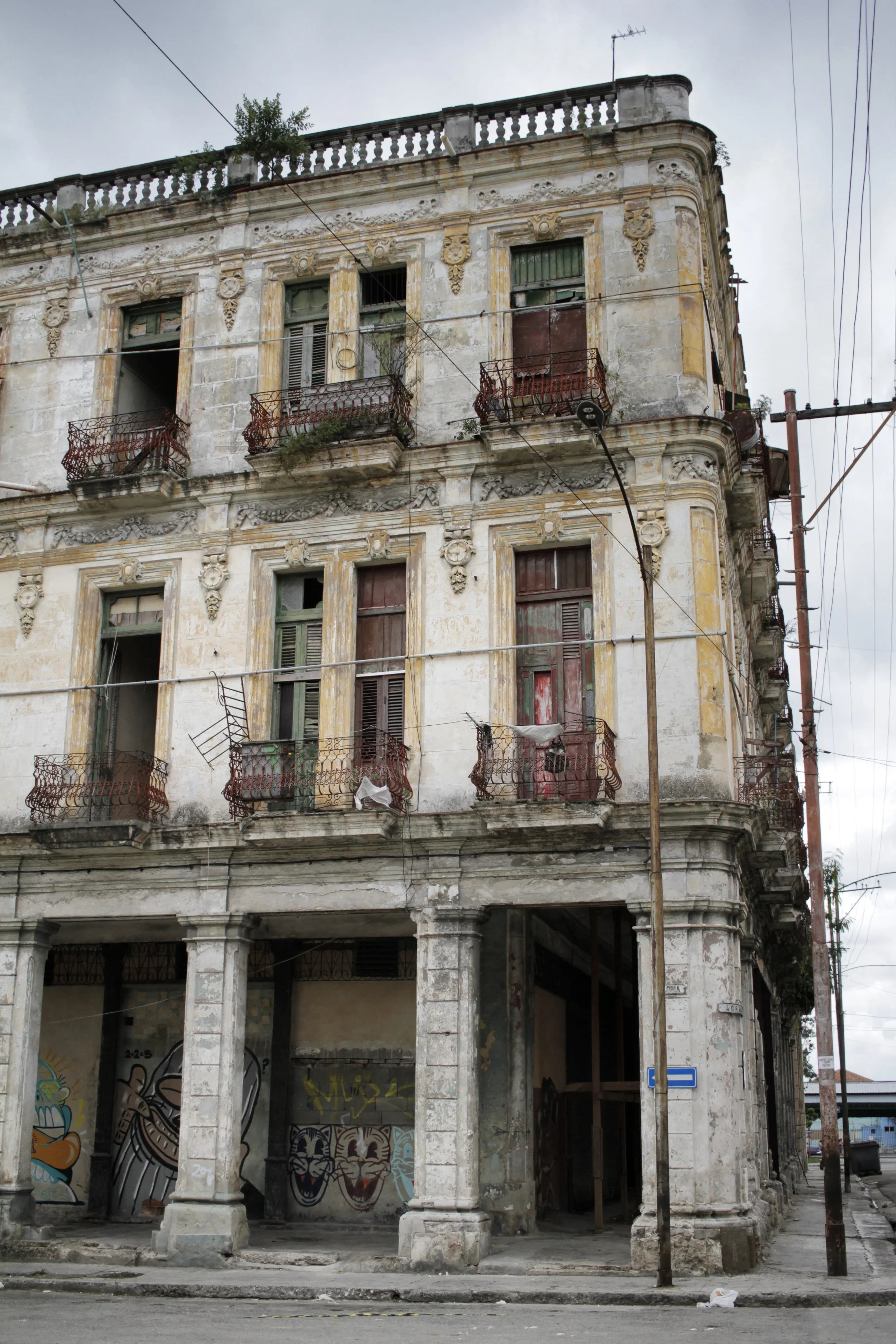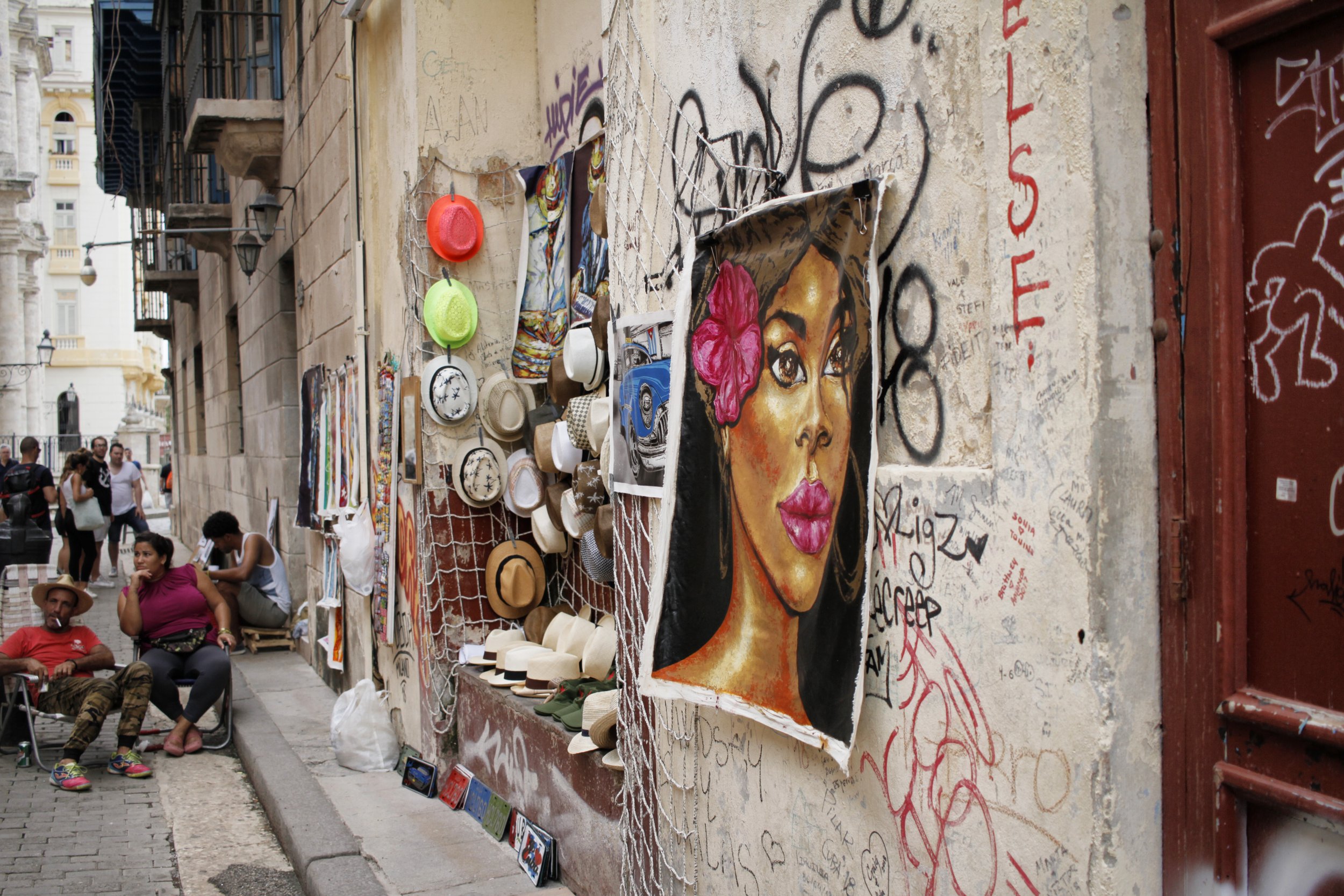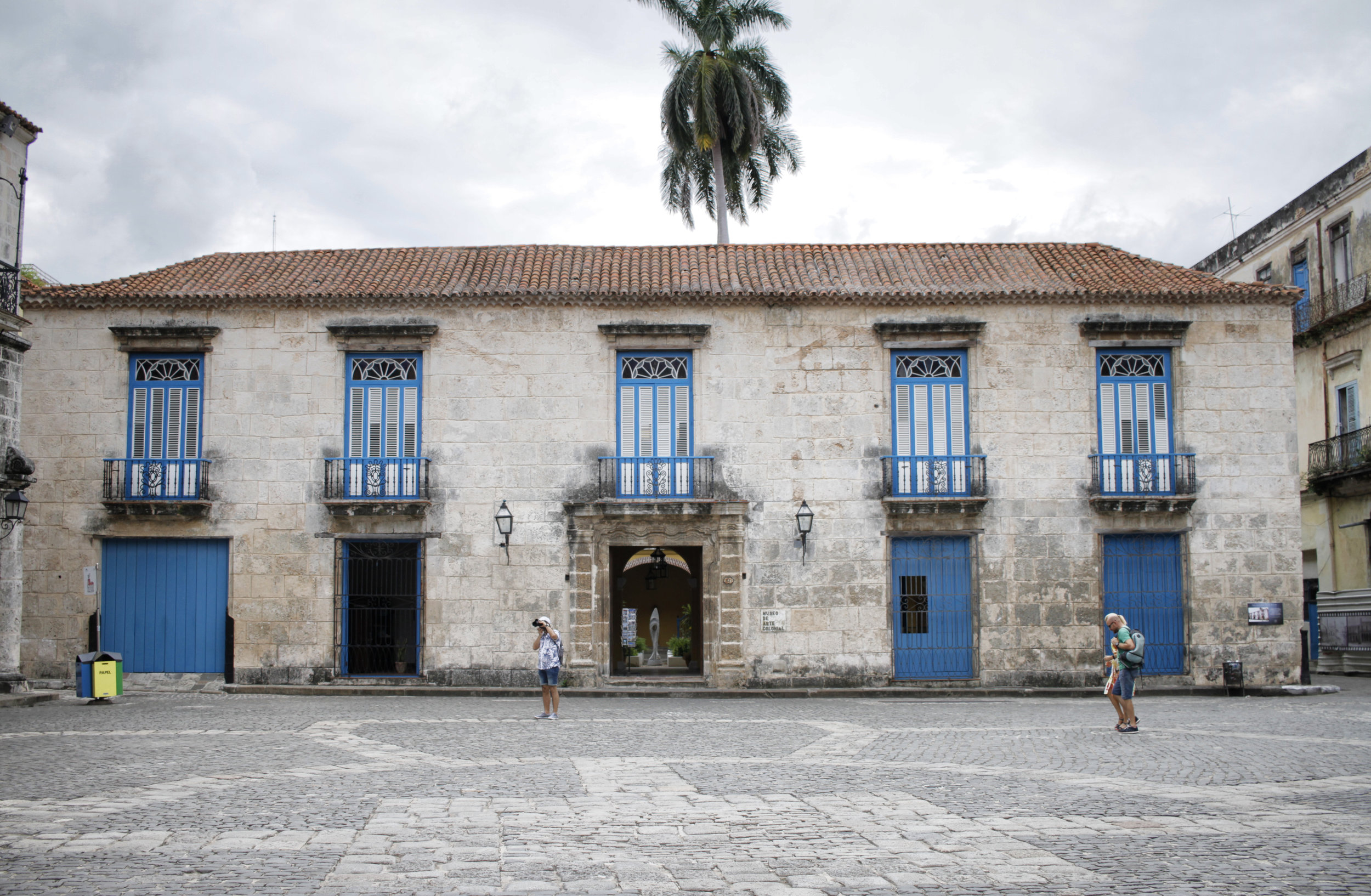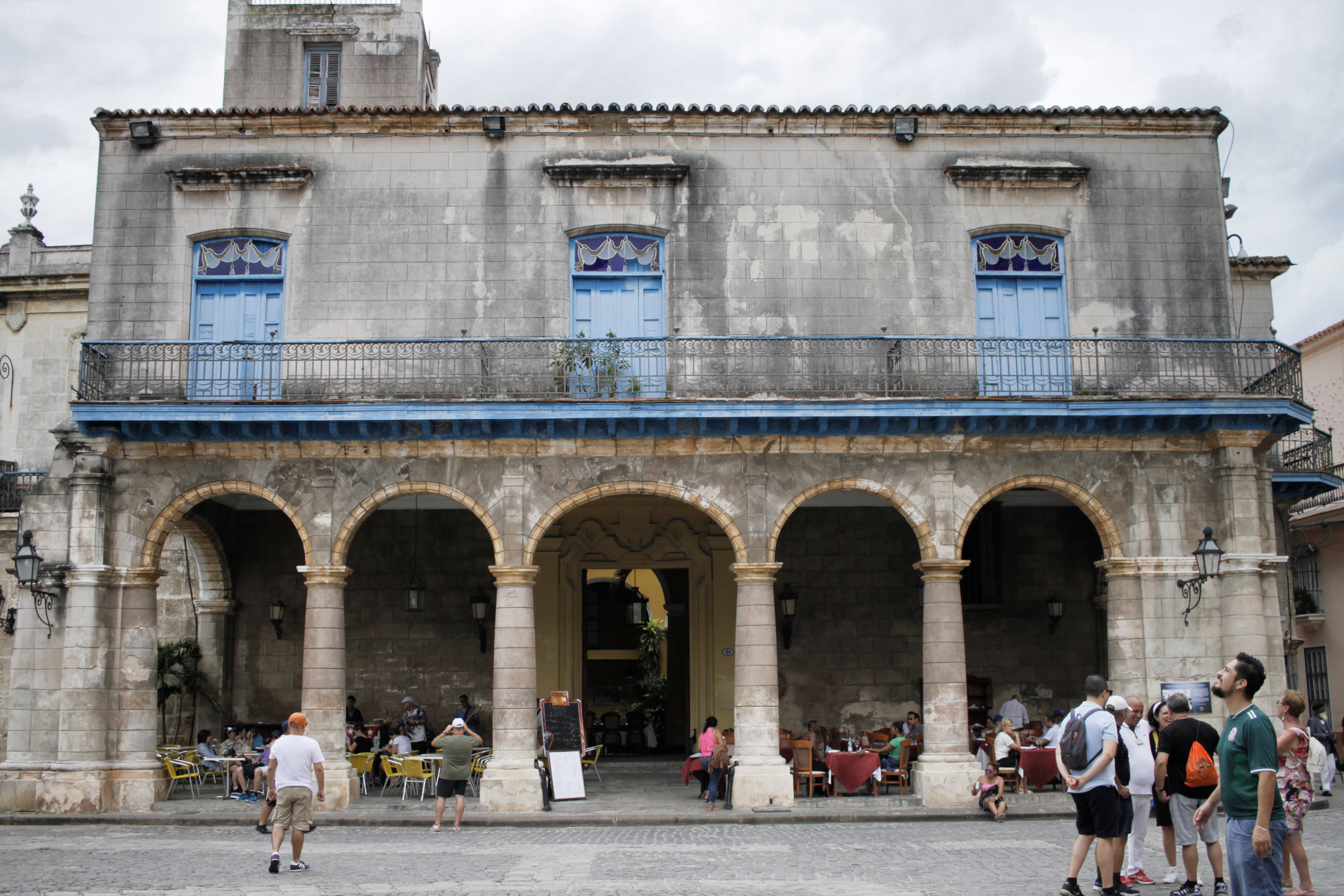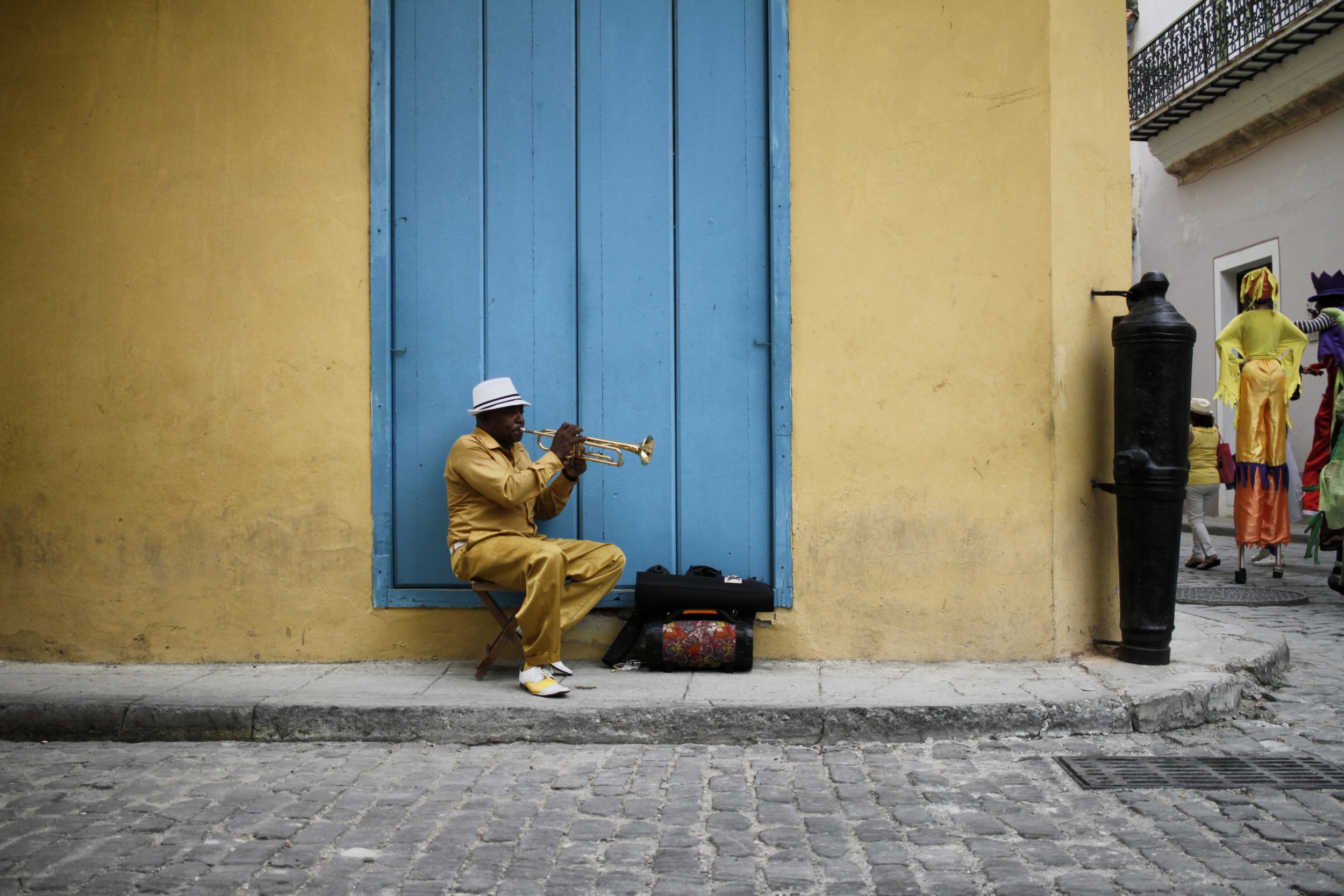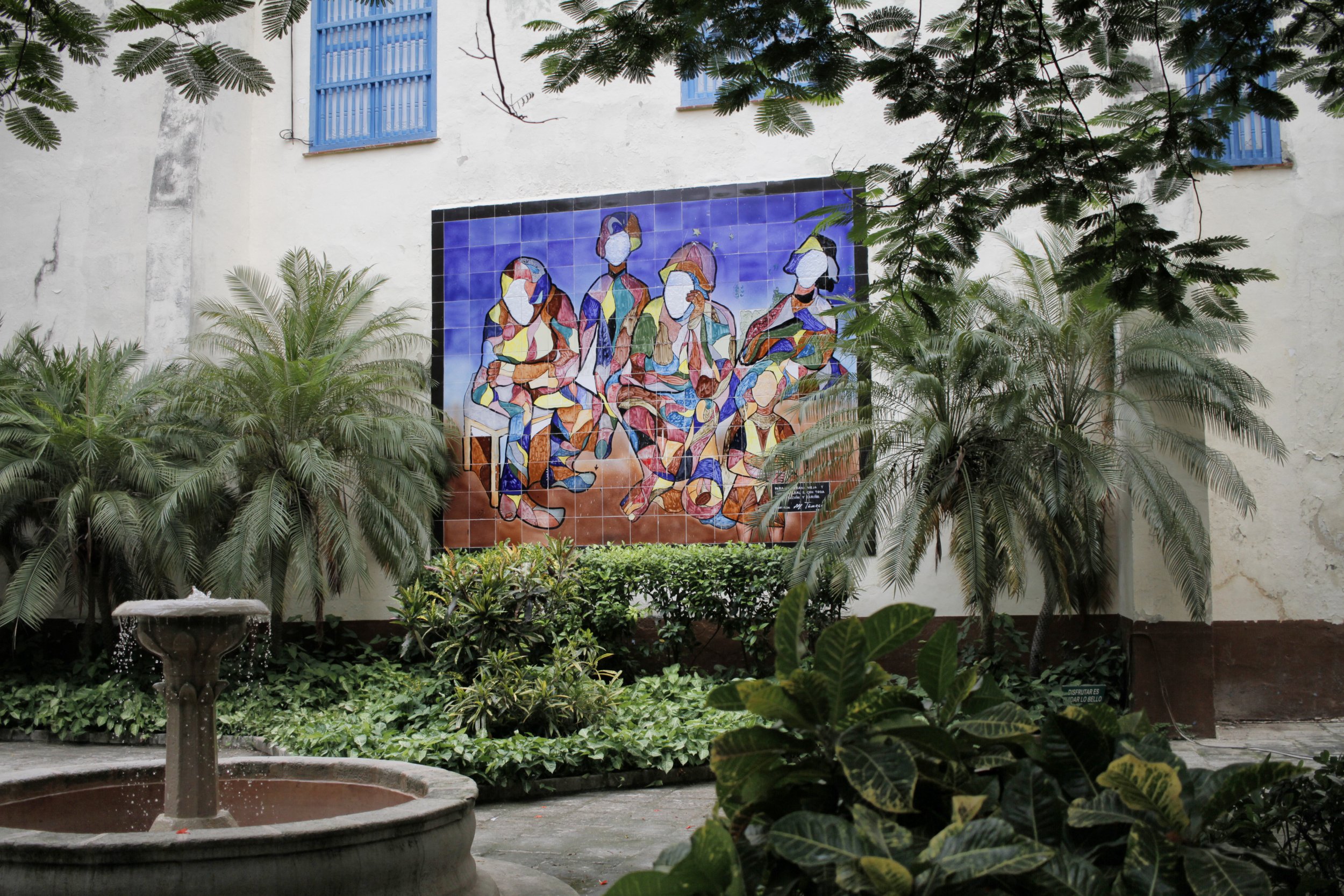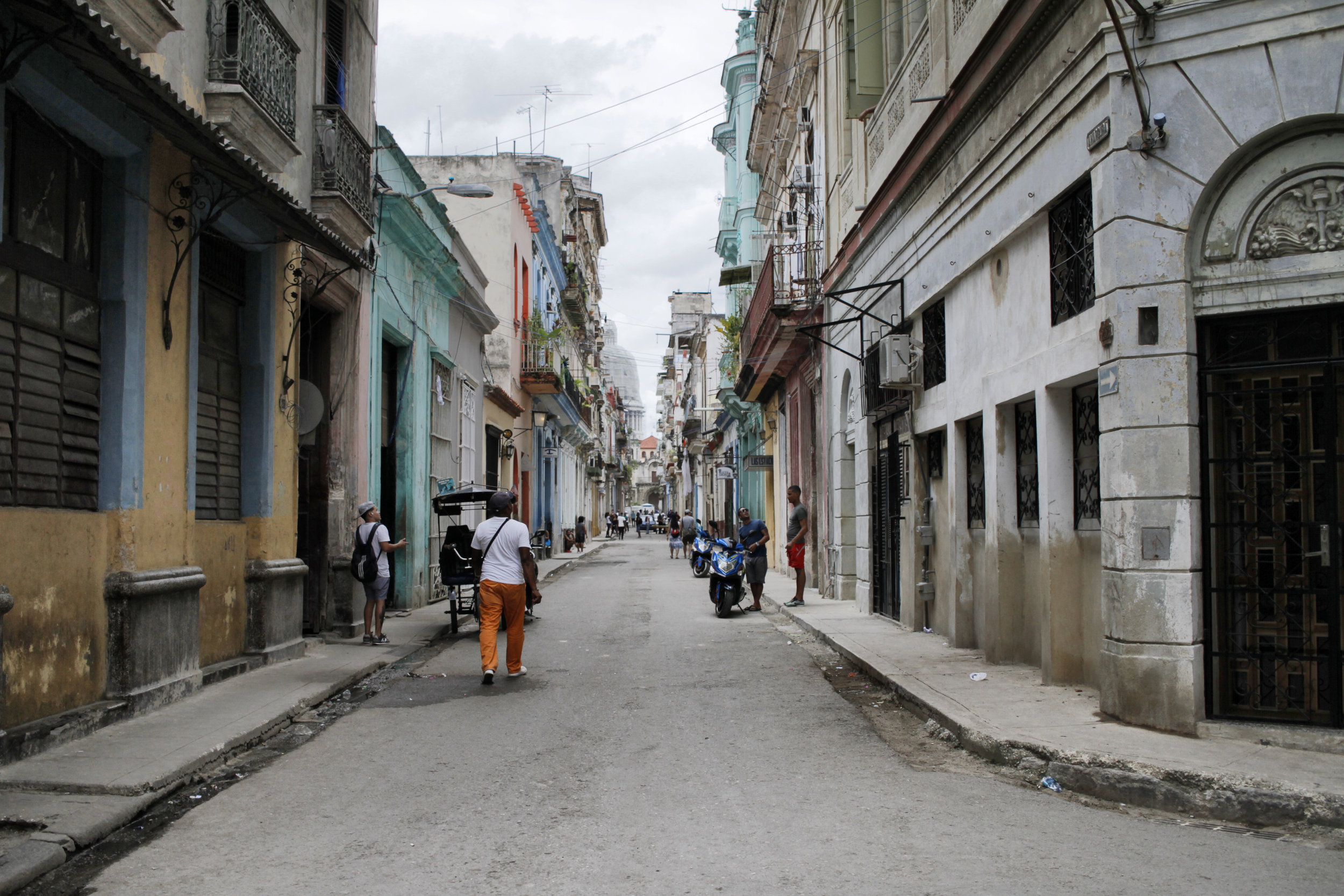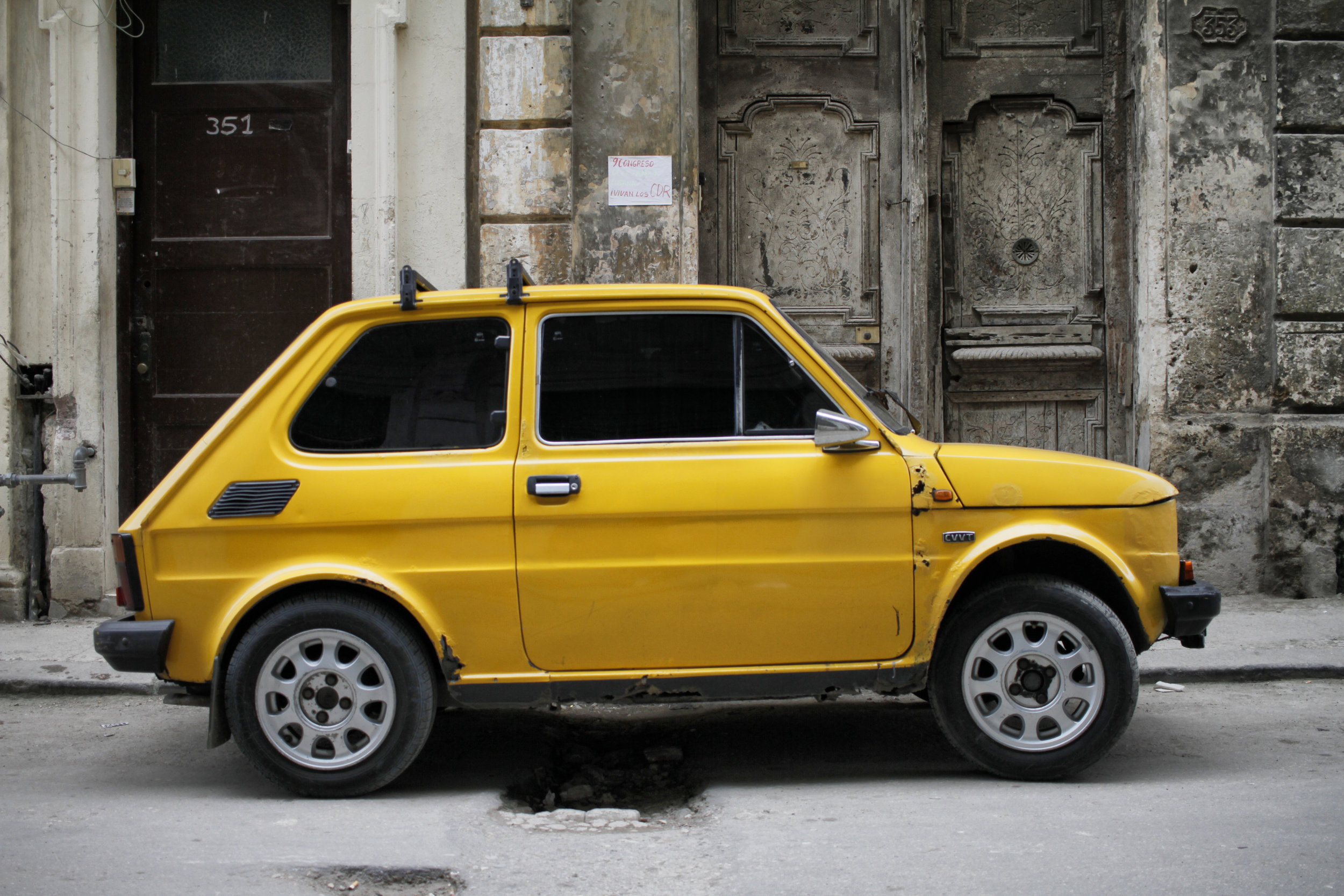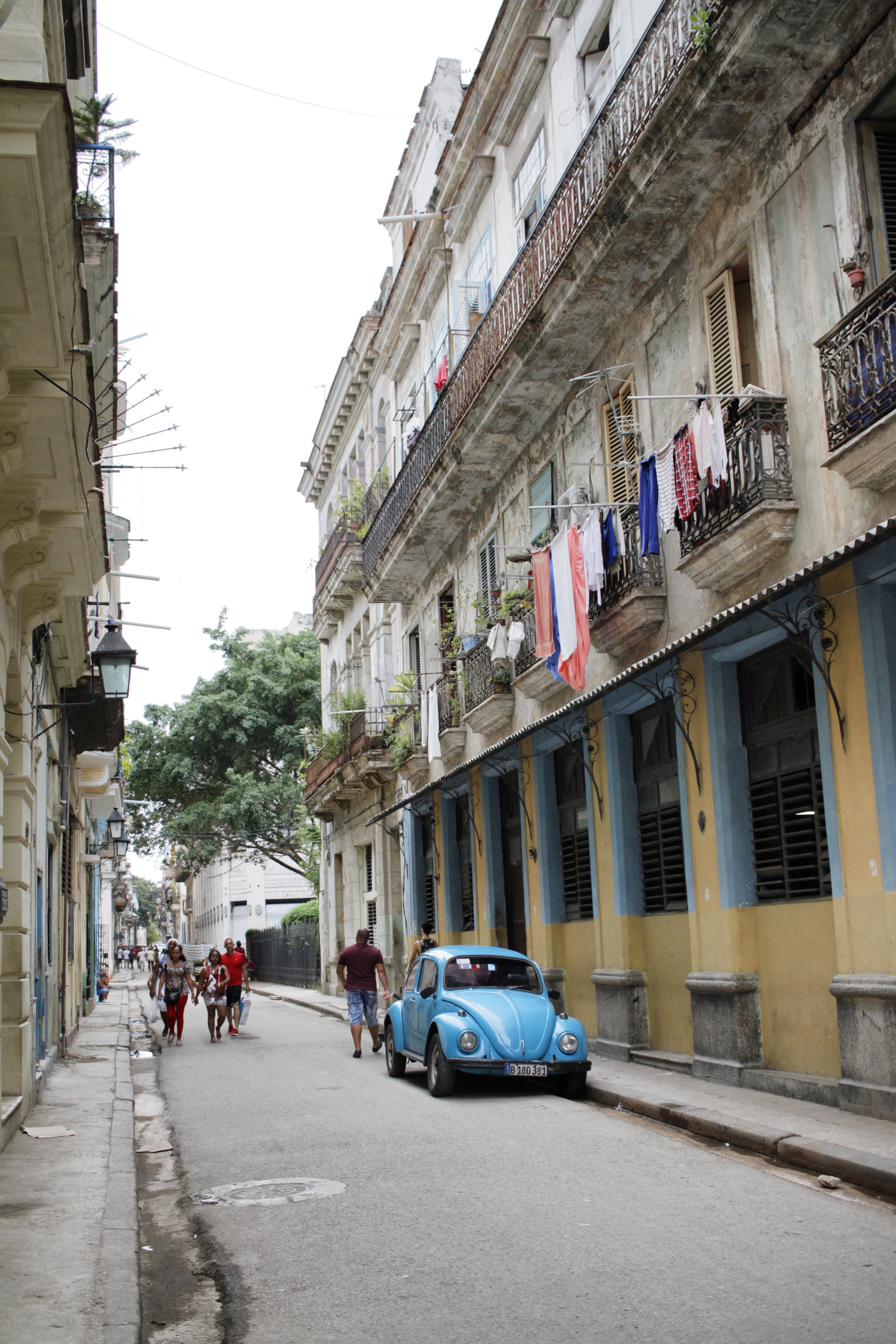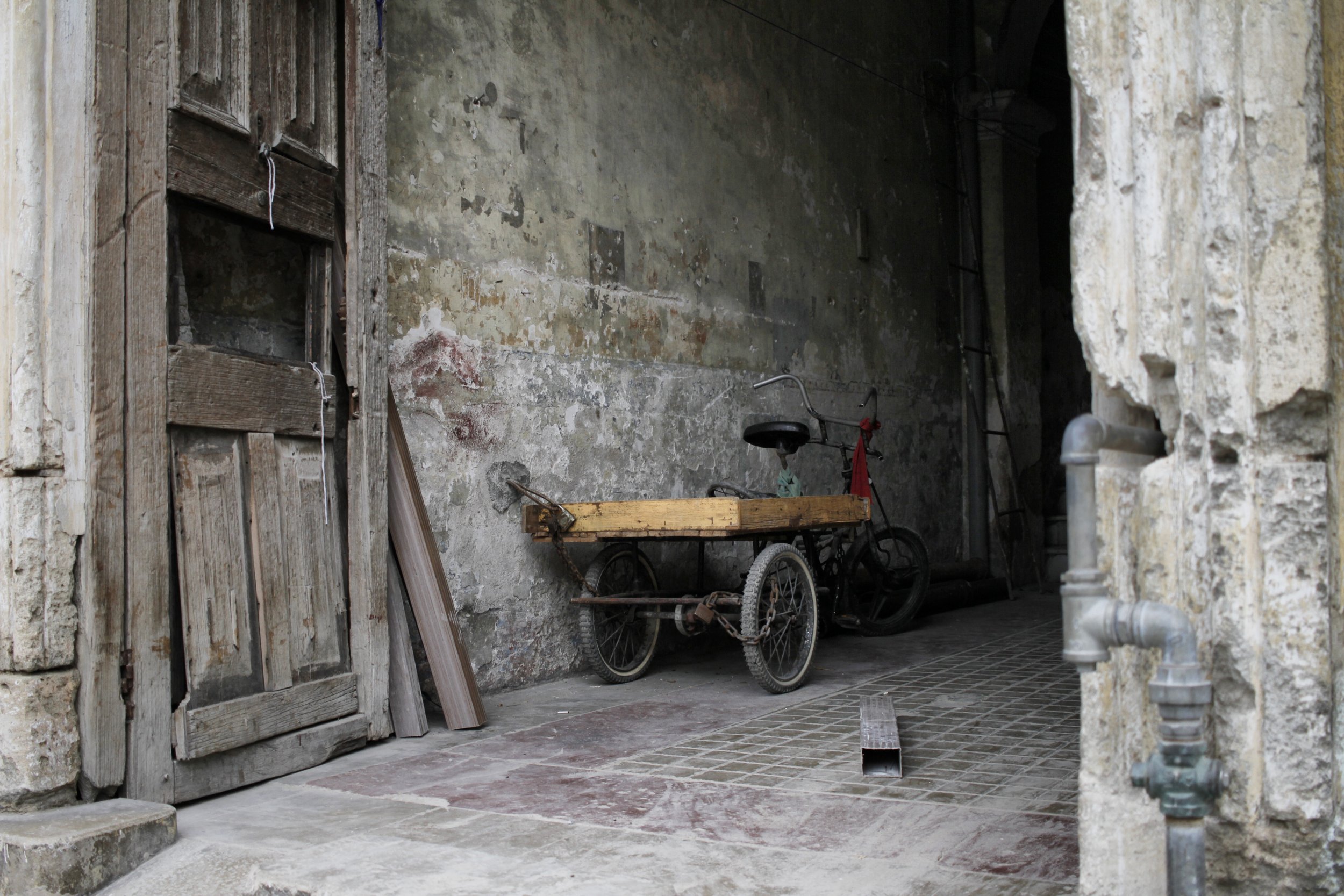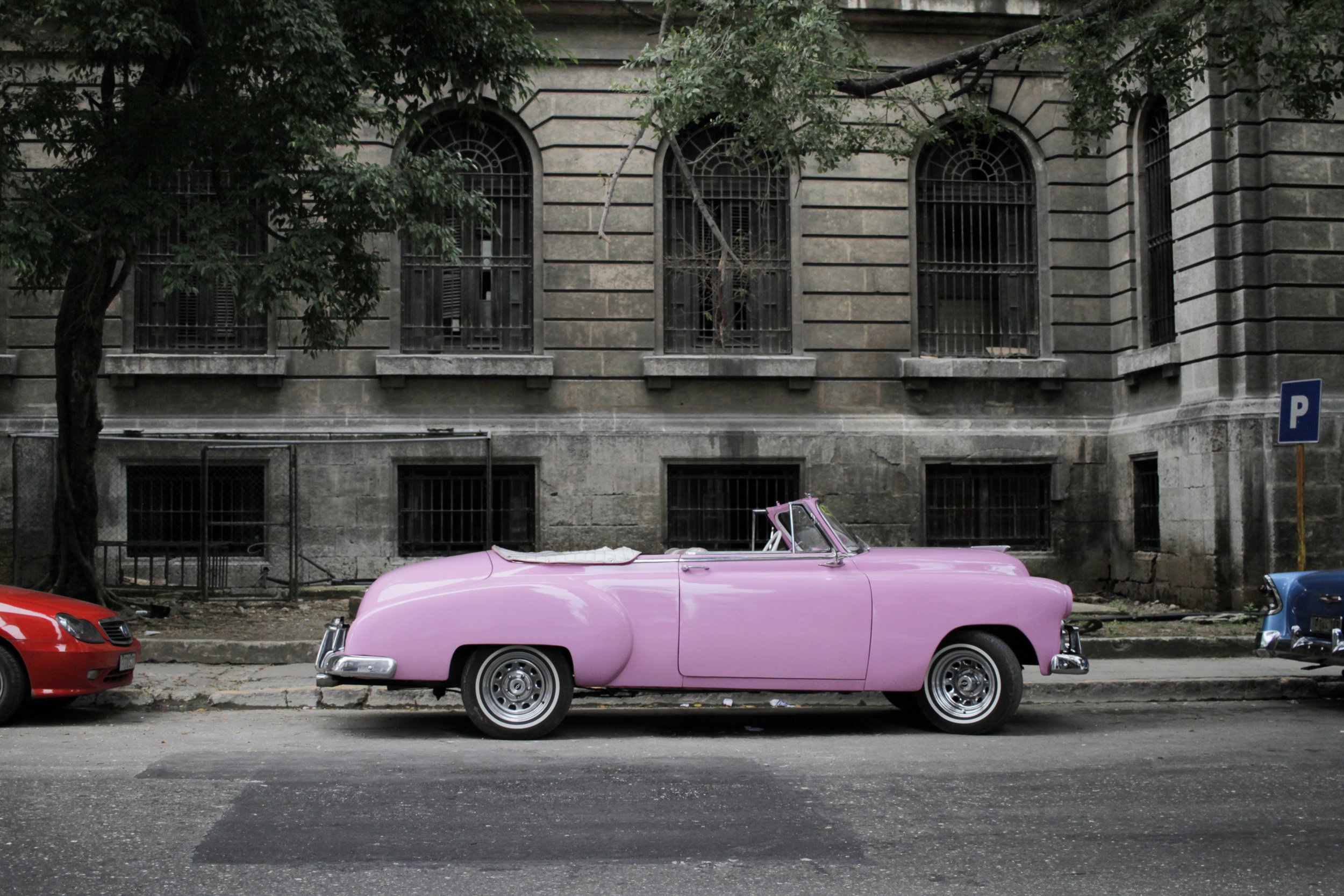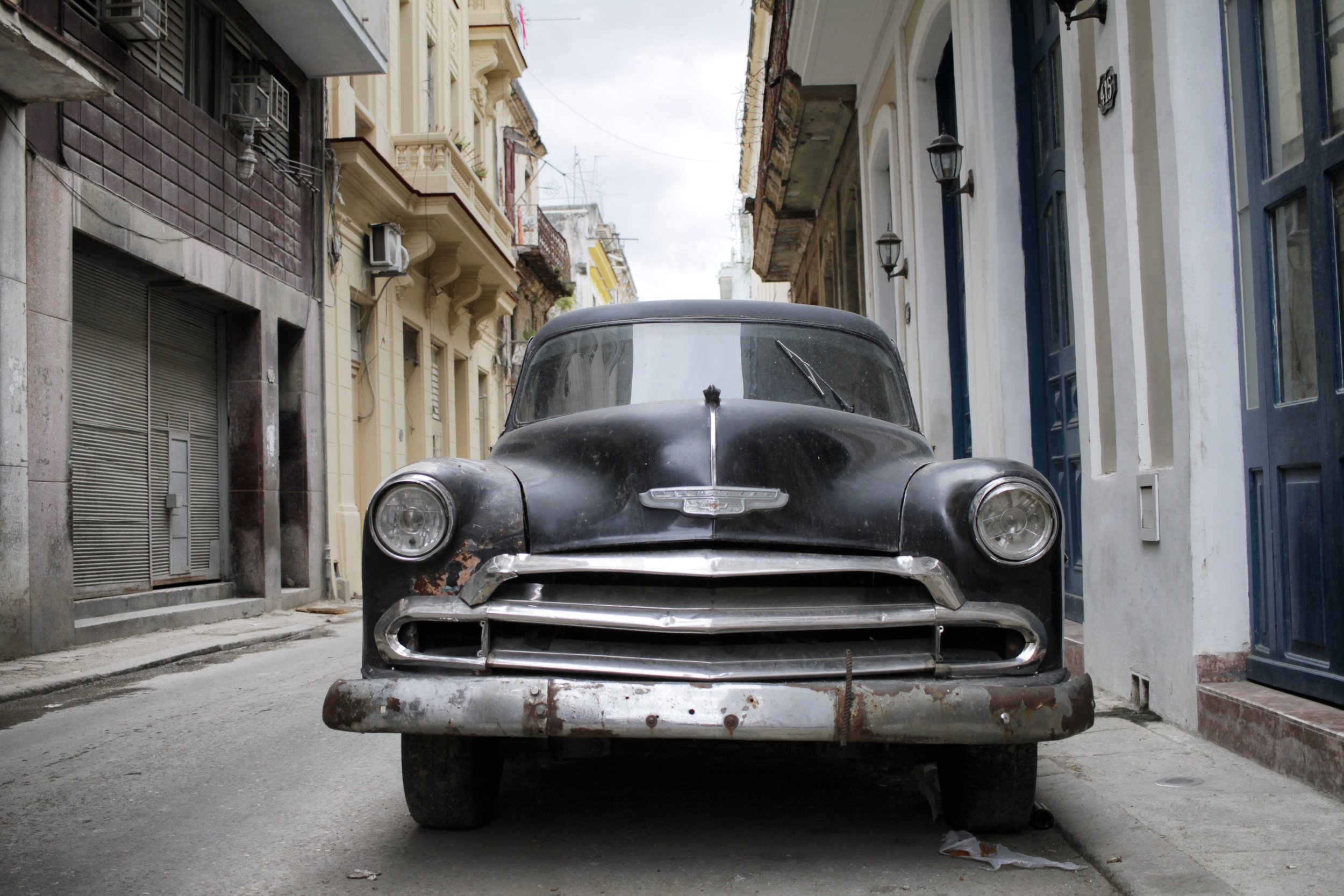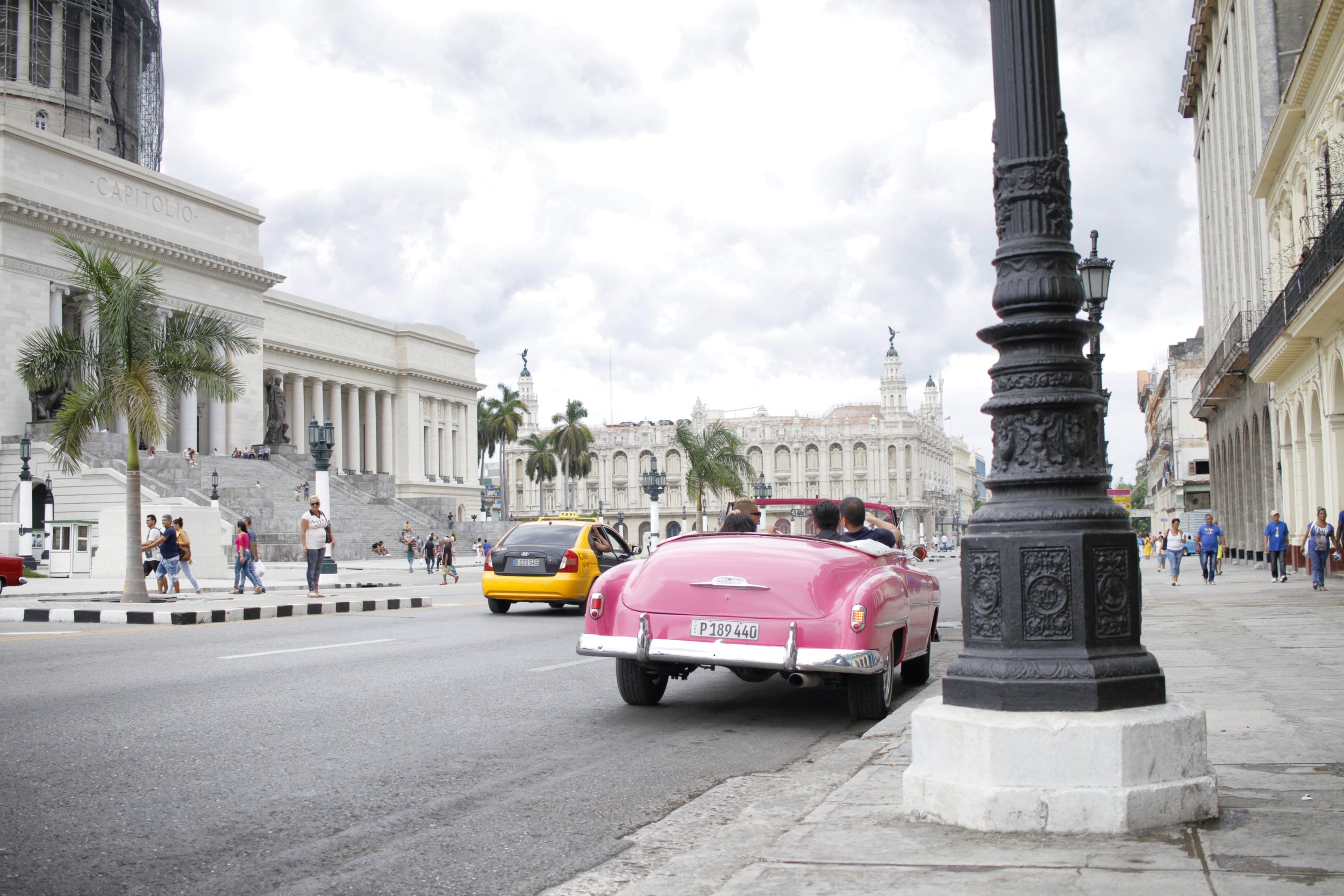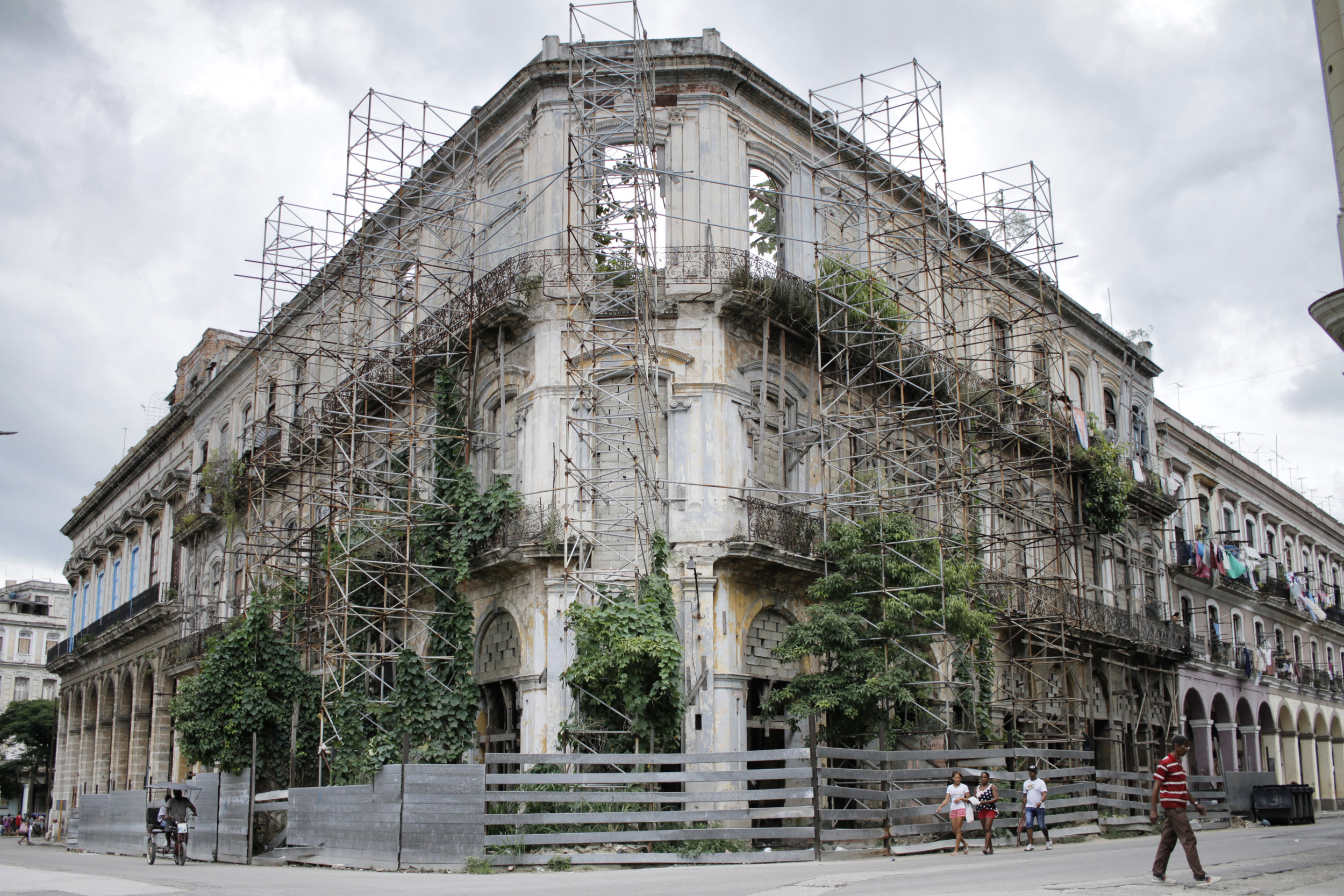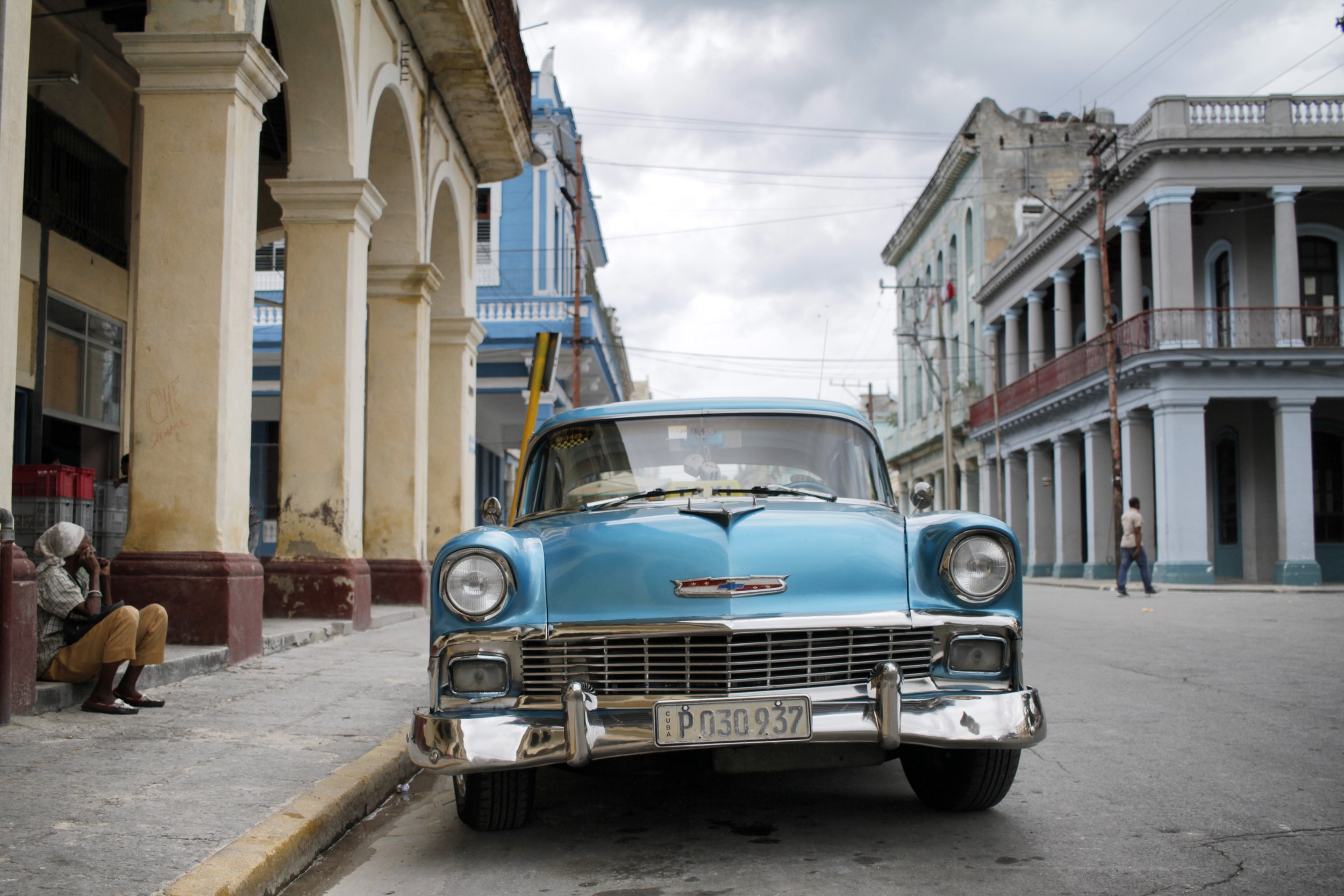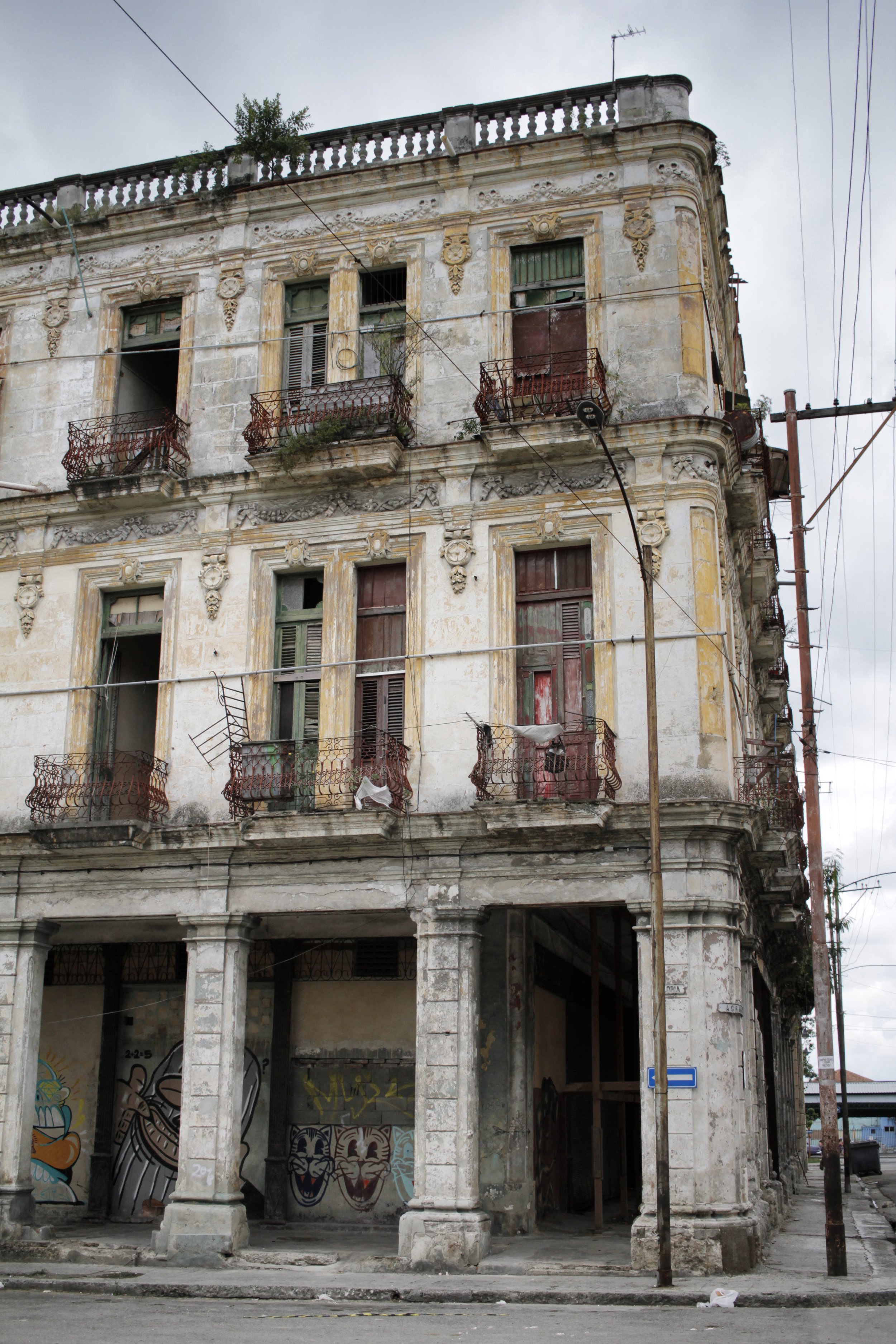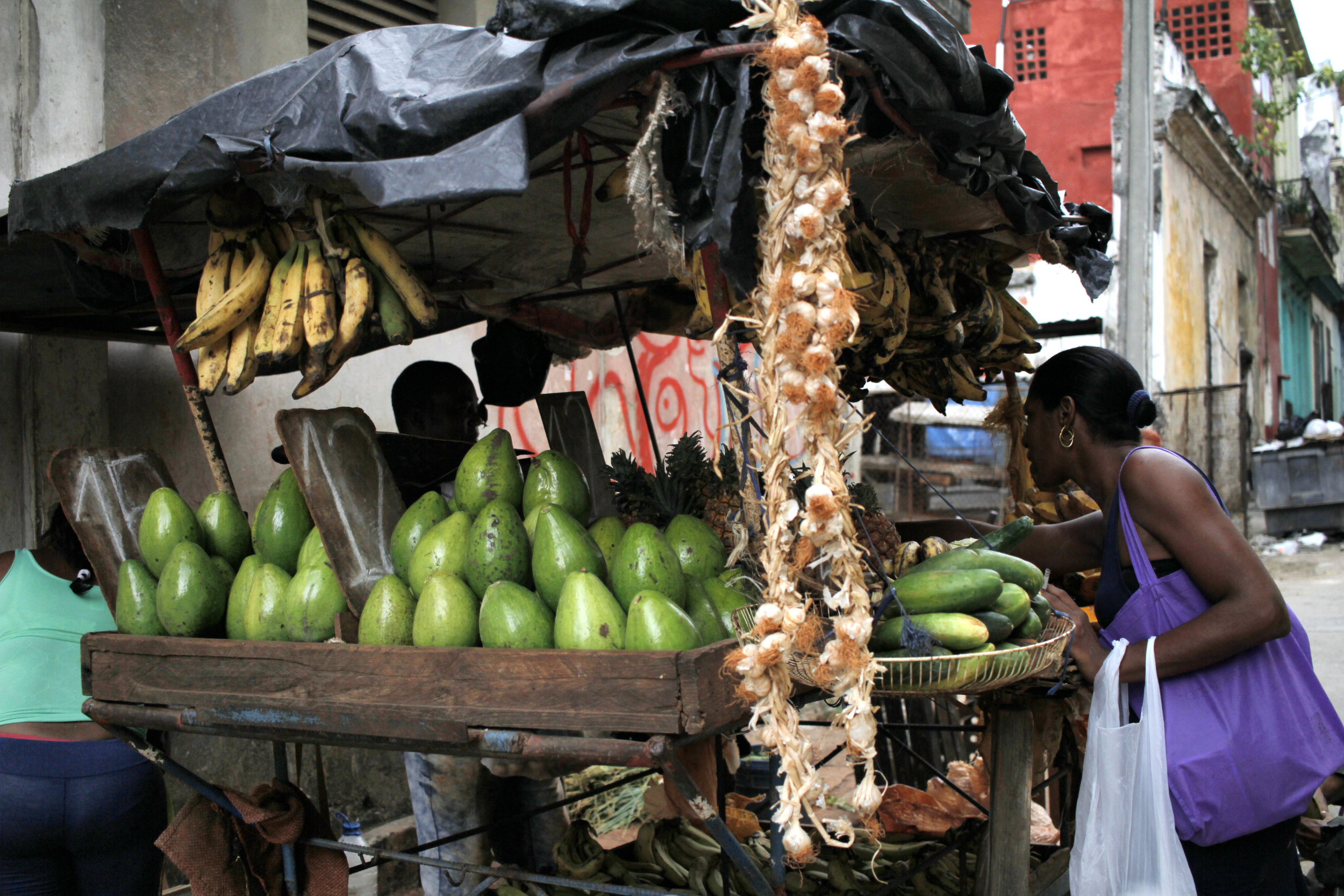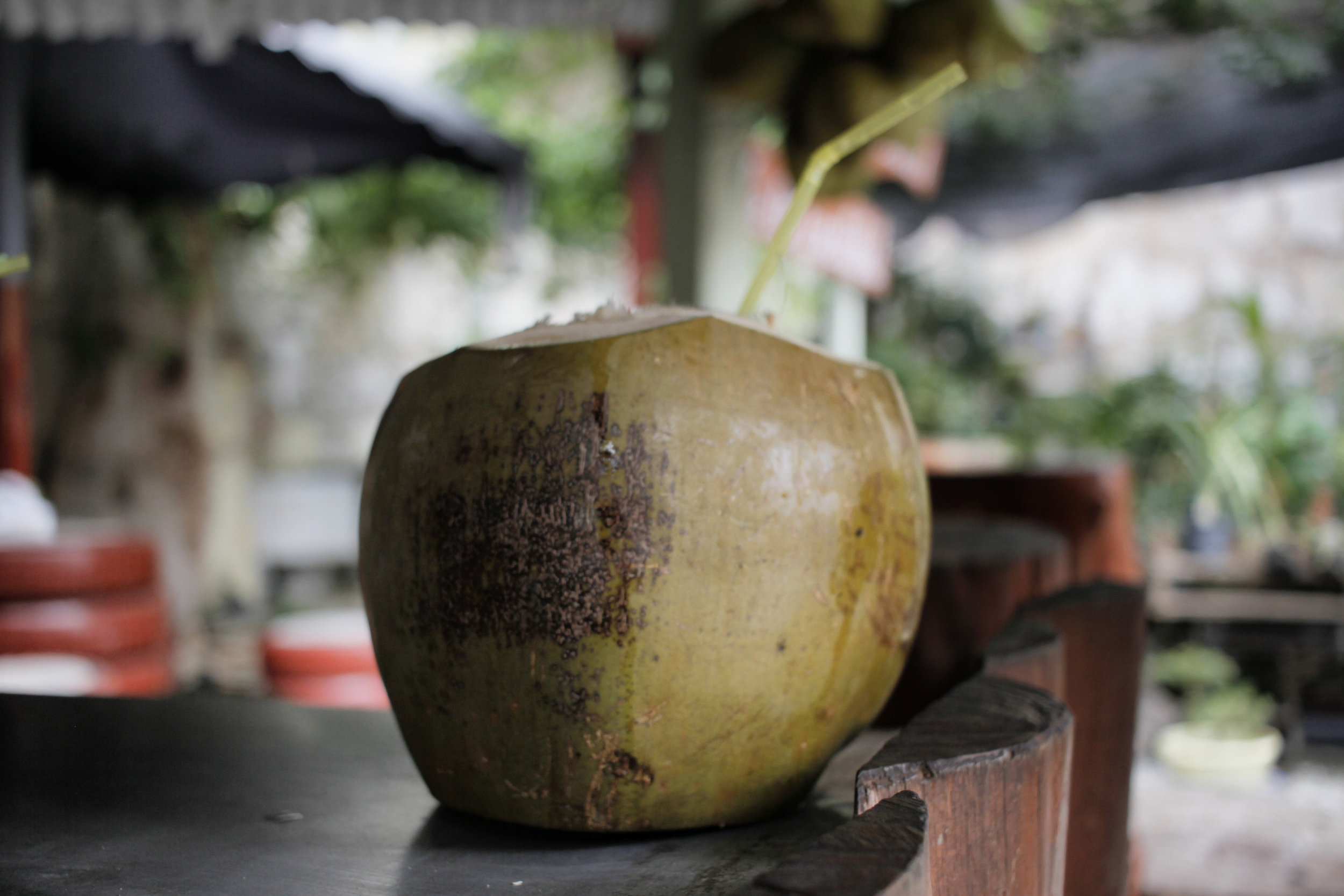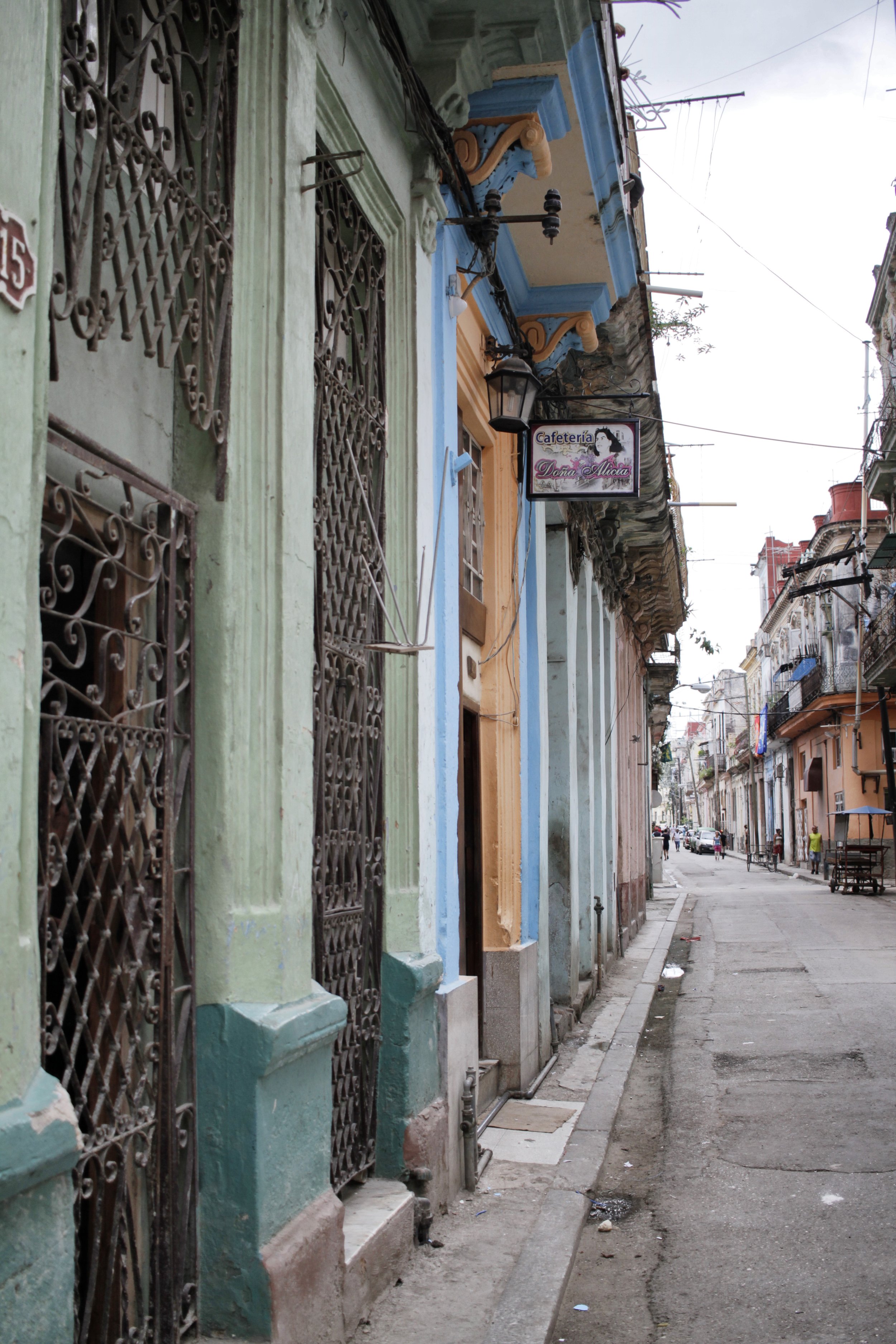Old Havana
Best things to do in Havana: uncover colorful colonial architecture, rich culture & a unique blend of old-world charm and modern-day energy with this travel guide.
Rum, coffee and cigars, ropa vieja, Cuban music and Fidel Castro; that’s what most know about Cuba but that only scratches the surface.
Cuba, officially the Republic of Cuba, is an island country where the Caribbean Sea, Gulf of Mexico and Atlantic Ocean meet. It’s comprised of the (largest) island of Cuba, Isla de la Juventud and 4,195 additional islands, islets and cays.
Culturally, Cuba is diverse, with 37% of Spanish origin, 11% African and 51% Mestizo, those of European and Indigenous ancestry. There's also a 1% Chinese population.
Historically, Cuba has suffered greatly under rule of the Communist Party but has known brief success as the “Sugar Bowl” of the world, as it used to have the largest sugar industry until the 1960’s.
Havana, Cuba’s capital, is located on La Habana Bay on the island’s north coast and is the most populous city in the Caribbean region.
It was founded by the Spanish in the 16th century and served as a jumping off point for the Spanish conquest of the Americas.
Before 1959 when Fidel Castro came to power, Havana was a mecca for American tourists looking for warm climates, exciting nightlife and a rich cultural history.
Unfortunately, in the years to come, Havana lost much of its luster when Castro’s socialist government began to divert the country’s resources. Even with rehabilitation projects during the 1980’s, Havana has continued to deteriorate but was still listed as a UNESCO World Heritage site in 1982.
Today, Havana is known for its colonial architecture, vintage cars and tropical drinks - all of which I was happy to enjoy.
Let’s just say, Cuba was a long time coming. My original flight was booked a year prior but when Hurricane Irma hit Havana, it was best to reroute someplace safer; enter, Ireland.
Fast forward nearly a year and Cuba was on. With only 10 days to explore the country, our schedule was tight, first flying into Havana, then moving on to the cobblestone streets of Trinidad, chasing waterfalls in Cienfuegos and finally the mogote hills of Viñales Valley.
Best Things to Do in Havana
Prepare / For Cuba
Get to Cuba Part I: Documents
Get to Cuba Part II: Flights
Get to Cuba Part III: Immigration
Accommodations: Booking a Place to Stay
Money: Cash, Exchange & Duel Currency
Transportation: Buses & Private Taxis
Book Activities
Internet & Wifi (or Lack of)
Explore / Old Havana on foot
Witness / A cannon shooting at Morro Castle
Best Things to Do in Havana
Prepare for Cuba
Cuba is definitely one of those countries where you can’t just wing it (as I often do) and there are so many areas to cover. Most importantly, is getting yourself to Cuba which includes things like what documents you’ll need, flights and immigration rules. Cuba is also unique in the way that accommodations, currency and transportation are used. Even booking activities can be stressful, especially without readily available Internet connections.
Get to Cuba Part I: Documents
Visa / To enter Cuba you need a visa. A simple Google search is the best place to start (try Cuba Travel Services). Around $100 USD will cover processing and shipping. Your visa will arrive as a blank slip and you’ll need to fill in the details (no expiration dates or travel dates were listed). With flights connecting through Miami, visa’s can be purchased at the airport (sounds a bit risky though).
Health Insurance / All Cuban travel sites stress the need to buy health insurance for your trip. However, after speaking with a friend who didn’t need it during his trip, we took the risk. It paid off and we were never asked but in the off chance you do need insurance, it’s sold at the Havana airport. Though rumor has it medical care for foreigners in Cuba is poor and may be the reason you’re supposed to have health insurance covering an emergency flight out of the country.
Get to Cuba Part II: Flights
Flights are cheap so it’s a great time to visit Cuba (around $250 USD from Chicago during rainy season). US based airlines fly directly to Havana, typically connecting through Miami or Panama. We booked a flight with American Airlines through Charlotte but other options are available.
Get to Cuba Part III: Immigration
When entering Cuba, no real questions were asked. The process was quick and painless. The return home was a different story though. US immigration wanted details about our visit and anything we brought back with us. Things like coffee, honey, cigars and rum have limits but small amounts can return without a problem.
US immigration even swabbed packages and conducted pat-downs on many passengers. And after grabbing my bag from claims I noticed my lock had been clipped and my things searched. On the way back, I had opted to lock up after a mishap on my way into Cuba; a gift box of cologne had been stolen out of my luggage. So if you’re planning on bringing any valuables to Cuba hide them deep in your suitcase and remove any packaging to avoid theft.
Accommodations: Booking a Place to Stay
Typically, hostels are the way to go, using Hostelworld as my primary booking site. It makes comparing simple and offers features like reviews, photos and maps, however, Cuba isn’t the norm. There are no true “hostels” and apparently the government takes a huge cut from Hostelworld so local families don’t benefit much from the site.
Instead, homestays are most common. Use a Cuban version of Airbnb like Cuba Booking Room but be aware, booking is a lengthy process. First, put in a request for the days you need. The site will contact the family and let you know if they’re available. Then, confirm your stay. The agency will request detailed information from you including flight details, accommodations before and after and possibly a deposit (more than five nights or so and you’ll pay $5 USD per night in advance).
Money: Cash, Exchange & Duel Currency
Most importantly, bring ALL the money you plan to spend in CASH. This includes money for food, accommodations, travel and shopping. You’re not able to access any US banking systems whatsoever (even at banks or the airport).
If exchanging US dollars its best to first exchange them into Euro’s BEFORE you arrive in Cuba. Cuba applies an extra 10% fee on any US currency so this tip can save you hundreds. Once in Cuba, exchange your Euro’s for CUC.
There are two currencies in Cuba: the peso convertible (CUC) and peso Cubano (CUP). Be careful to use the CUC (pronounced “cook”) for all tourist activities. CUP are 1/25th the value of CUC and mainly used by locals. Sometimes locals will trick you by giving the wrong currency in return, so be cautious.
Transportation: Buses & Private Taxis
Transportation is very expensive in Cuba and being an island doesn’t help. Cars are old, gas is pricey and repairs are likely slow and difficult. There are two main transportation options in Cuba as a tourist - buses and taxi’s (and by taxi’s I mean ‘collectivos’ or shared rides which are prearranged, not hailed street side).
Everything I read before arriving suggested private taxi’s were wildly expensive while local buses were much more affordable. Truthfully, we didn’t find this to be true. Often times a private taxi would be the same price (or $5 USD more) than the bus (per rider). Taxi’s offer added convenience by picking you up at your homestay and dropping you directly at your next stop. If you ride the bus you’ll need a taxi to and from the station. Private taxi’s are also much faster (sometimes twice as fast) and offer more comfort.
That said, arrange your rides at least one day in advance. Otherwise, you’ll run the risk of no taxi’s or sold out buses. Ideally, a good price from the airport to Havana would be 20-25 CUC ($25-30) and a ride from Havana to Trinidad, 30 CUC ($37.50), while the bus runs 25 CUC ($30). Thankfully it never came to riding local buses because they resembled army trucks carrying livestock. They’re open-air and standing room only.
In total, for just over a week we spent nearly $500 USD on taxi's. This includes rides to and from the airport and between four cities (Havana, Trinidad, Cienfuegos and Viñales). Remember to barter with drivers too, they’ll lower prices on most occasions.
Booking Activities
Booking "packages" online was super expensive as well, so we kept things loose and looked for help elsewhere. Keep in mind, although homestays are very accommodating they aren’t hostels and may not have great recommendations on activities but can still be a good resource.
Cuba as a whole does not have the infrastructure set up for tourism but it does help to ask locals for help with food, travel and tours. Things aren’t really what you’d expect so be flexible and open minded, as well as prepared. After few days, we realized it was best to carry around an “emergency” supply of snacks, water, sunscreen, bug spray and rain gear, just in case.
Internet & Wifi (or Lack of)
In recent years, Cuba has adopted WiFi zones. Most often, these zones are in public parks or other central locations where people gather. You’ll need to buy and charge a card to use WiFi (roughly 1 CUC/hour). Unfortunately, these areas are busy and the connections are slow. To be safe, save screenshots or download any important information for your trip before entering Cuba. This includes addresses, names, exchange rates, maps, flight details and so on.
Explore Old Havana on Foot
With a backpack full of water, snacks and camera gear we took off from our hostel on foot. The streets of Old Havana were full of vivid colors, mostly spray paint and accent colors on old buildings. The city felt clean but quieter than I expected. People sat around on stoops watching others walk by or chatting with friends.
Around every corner was something new. The buildings were massive but crumbling. Tourists were here and there but it was rare to see large groups. The weather was hot and humid with cloudy skies.
As we walked through the streets, we bumped into a group of locals playing music and dancing on stilts; the kind of thing you see in movies. The green landscape was rich, even in the middle of the city, with parks and small plazas springing up every few blocks.
As one might imagine, classic cars were everywhere (although not as many as I expected). Most of them were in pretty bad shape, being driven daily for nearly 70 years over bumpy cobblestone streets. I can imagine updates and maintenance are so costly that many can’t afford to keep them looking like new.
These rundown classics were being driven around as regular taxi’s while the fanciest ones were used to drive tourists for up to $70 USD an hour. Spotting an interesting car was like finding gold but many of the owners were lingering nearby so it was tough to get up close and snap a photo.
Hanging outside nearly all the buildings were clean clothes, drying in the wind. Lush plants grew out of every window and around each corner. We didn’t notice much in the way of shops or restaurants. Business seemed to be non-existent. The few restaurants we did find were tourist traps serving overpriced meals with identical menus.
After some time exploring we found the National Capital Building, El Capitolio, which is now home to the Cuban Academy of Sciences. Previously, it was the organization of government in Cuba until the Cuban Revolution in 1959.
The Cuban Revolution was an armed revolt in the mid-1950's led by Fidel Castro against the corrupt and oppressive government of Fulgencio Batista. Batista was eventually removed from office on December 31, 1958 and his government was replaced by establishing communist rule under the leadership of Castro who assumed military and political power as Cuba's prime minister. Since 1965, the state has been governed by the Communist Party of Cuba.
As a Marxist–Leninist, Castro believed strongly in converting Cuba from a capitalist system where individuals own the means of production into a socialist system where property and the means of production are owned in common, typically controlled by the state or government, though this was not his original platform.
In Castro’s famous 1953 “History Will Absolve Me” speech, he said his revolution would return “power to the people” so when he installed a socialist economy and a one-party political system, many fellow revolutionaries felt betrayed. Others fled because of fear and persecution including exiled landowners, Batista supporters, religious leaders, many of the middle class and revolutionaries. On the other hand, many poor Cubans admired Castro for implementing policies that promoted equity and minimized discrimination.
Even today, among the crumbling buildings there seemed to be a silent reverence for Castro. Occasionally, I spotted a black and white poster of him, still pushing the agenda or honoring him in some strange way.
The dichotomy of those decaying buildings and the bright shiny classic cars was surreal, like a broken promise.
Behind the Capital Building, a little cart was selling fresh coconuts for 1 CUC. The owner recommended a local spot for lunch just a few blocks away near Jesus Maria and Habana Street, called Cafetería Doña Alicia.
The place was tiny and packed with locals eating all kinds of food. For 3 CUC we ordered rice, black beans, plantains, sweet potato and fried chicken. It was delicious but we were tricked by the owner when she returned local currency rather than CUC.
Eat and beware.
Witness a Cannon Shooting at Morro Castle
In the evening, we met up with my Peruvian friend’s brother who lives in Havana studying as an eye doctor. Near the Capital we caught an old taxi up to Castillo de los Tres Reyes del Morro for 5 CUC. On the way there we drove through an underground tunnel which felt pretty special.
Once on the other side, the taxi parked and we unloaded. After buying tickets for 16 CUC we entered the castle for the evening ceremony on foot. Every night at 8 p.m. soldiers reenact a typical cannon shooting. The ceremony began as soldiers marched to drums and reached its climax as the cannon fired - BANG!
Morro Castle was built by slaves in the 16th century and used to defend the city of Havana. Designed by an Italian and originally under the control of the Spanish, Morro Castle was captured by the British in 1762 and returned to the Spanish years later.
The castle’s cannons are now badly rusted but its rock walls stand tall. The fort has central barracks and an underwater archaeology exhibition, old latrines with a chute into the sea and doors with a drawbridge system. Another interesting fact lies in the prisons where holes in the back walls were used to feed prisoners to the sharks.
After exploring the grounds, we hailed a taxi to Plaza Viejo, the newer area of Havana, for 10 CUC. Our friends suggested dinner at Motivo which looked touristy but turned out to be pretty tasty. Mojitos, lobster, shrimp, fish and ceviche for 30 CUC - not horrible for a tourist trap (you’ll find it tough to find authentic Cuban food in most areas).
The next stop was Trinidad where we would admire local art, visit el Mirador and Sugar Mill Valley, sip on cocktails at Casa ChiChi and chill at Playa Ancon.

